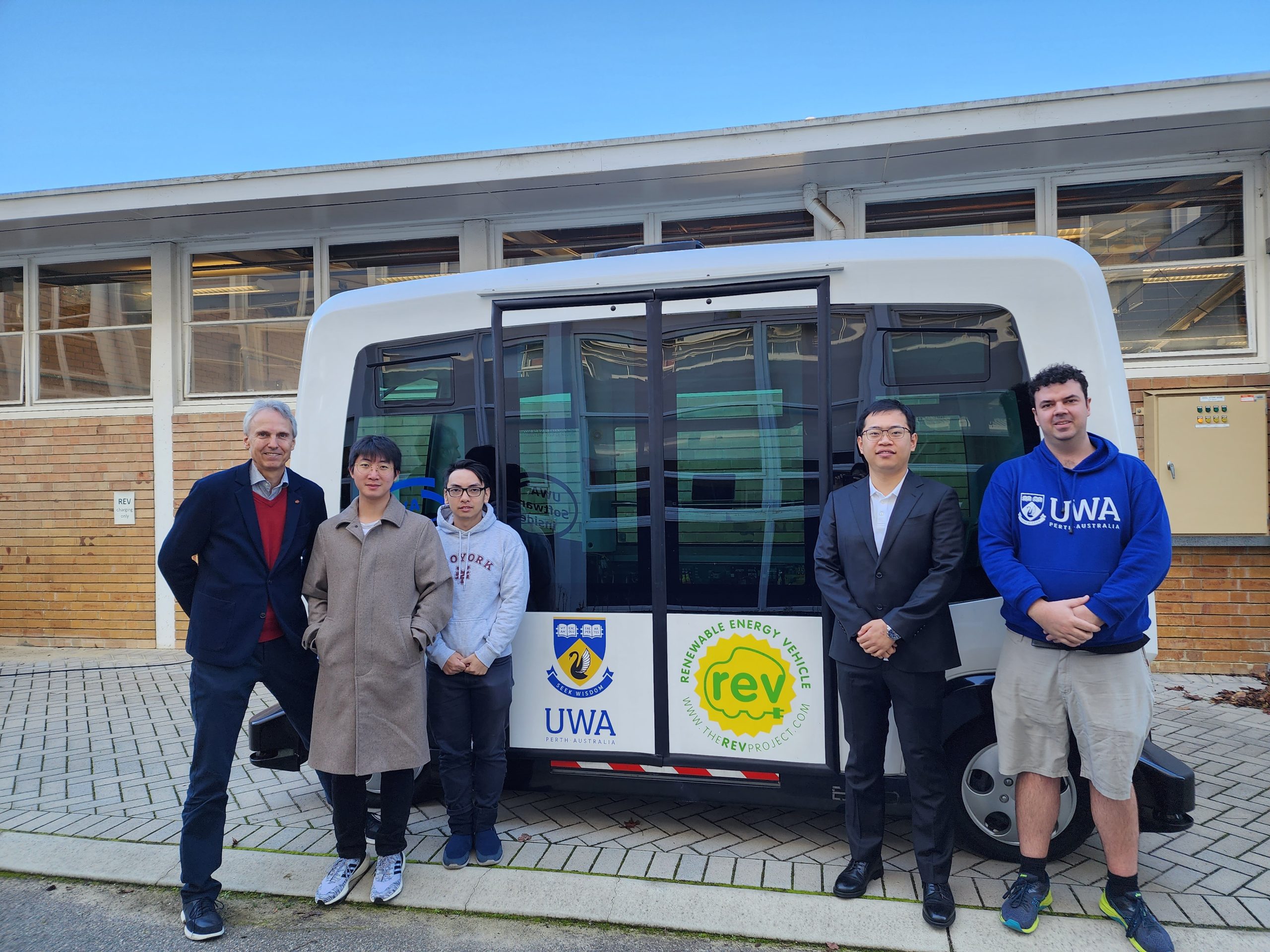An electric, driverless bus will soon be cruising up and down Perth’s streets in a three-year public road trial.
Parking at the beach is never easy. If you’re lucky enough to live in the Perth suburb of Eglington, you could soon hop on an autonomous bus that transports you a few blocks away from the Amberton beachfront.
In a first-of-its-kind project, the University of Western Australia’s autonomous nUWAy Bus involved students in a unique work-integrated-learning experience, led by Professor Thomas Bräunl, from UWA’s School of Engineering.
UWA has pioneered a number of autonomous vehicle projects over the years, beginning with creating a driver assistance system through automated steering and braking in a donated BMW X5.
“In 2015, we also created the first fully autonomous Formula Society of Automotive Engineers car in Australia, which was student built,” he said.
Upping the stakes, the team had the chance to purchase a second-hand shuttle bus as a shell from Singapore to tinker with, supported by property development company Stockland.
The bus, which can carry six seated and four standing passengers, has since been decked out with student-developed software and an open-source operating system.
“We developed the full software stack for autonomous driving ourselves,” Bräunl said. “We added a number of hardware items as well, including new sensors and additional hardware for driving which was all integrated by UWA graduate students.”

A joint effort
UWA’s first shuttle bus was acquired at the beginning of 2020 as a joint project between UWA Engineering’s Renewable Energy Project and the UWA Business School.
Several generations of graduates have contributed to the project since, with a fresh crop helping to improve how the shuttle operates every year.
“We then purchased a second bus, so we have one that’s driving on the university campus and another that we’re preparing to use for the road trial at Amberton Beach,” Bräunl explained.
There are several layers encompassing the trial bus’ operating system. At a firmware level, light detection and ranging (LiDAR) sensors with a rotating mechanism have been employed.
“If anything comes too close to the bus, it will just stop,” he said.
The students then developed software on top of this basic safety level, including a GPS system enhanced with real-time kinematic positioning (RTK).
“With the RTK enhancement we get down to around 10 cm accuracy, so if we know exactly how the road continues, we can drive accordingly,” Bräunl said.
AI algorithms based on image processing have also been developed.
‘The students are manually driving the bus several times up and down the road in Amberton,” he said. “Using a joystick controller, they try to stay in the middle of the lane and record both the GPS coordinates and 10,000 images for processing in the neural network so it learns how to navigate the road for future trips.”
Preparing to launch
The Amberton shuttle is still in the training phase, with the team hoping it’s ready to ferry passengers to and from the beach by the time summer arrives.
Before the trial launches, safety officers must be trained to accompany passengers on every journey.
“Once we’re ready to take passengers, the shuttle will make four-kilometre round trips throughout the day from the Stockland office, on the corner of Marmion Avenue and Cinnabar Drive, down to the Amberton beachfront,” Bräunl said.
The electric shuttle will charge overnight in a charging station at the Stockland office where it lives. While it travels at a maximum of 20 km per hour, other drivers can be assured the shuttle won’t hold up traffic.
“The idea is if there’s traffic queuing up behind it, the shuttle will pull over at one of the many parking bays on the side of the road to let drivers through,” he said.
Meanwhile, the UWA-based shuttle is already a fixture on campus, transporting students from the Reid Library down to UWA’s Business School.
“We’re using a different method with this shuttle. Because the campus is quite dense with buildings, we can rely on LIDAR navigation alone,” Bräunl said. “It creates a positive atmosphere – people take photos and stop to ask about the technology.”
Scaling up
Throughout the trial, data will be collected on both the performance of the software, along with passenger experience and their views on the future of autonomous driving. Once completed, the team will consider options for scaling up the technology.
“If there are other locations that would benefit from an autonomous bus, we’re happy to explore them and deploy the shuttle,” Bräunl said. “There also might be opportunities to source an additional shuttle bus.”
In the meantime, Bräunl is hoping regulations catch up to this emerging technology.
“Currently, the regulations are quite restrictive. It took us about three years to get approval and it wasn’t cheap either,” he said.
To get the project off the ground, UWA had to specify exactly which route the shuttle would travel, with an externally conducted traffic analysis and management study required to gain a permit.
“If you want to travel anywhere else, you have to go through the same procedure again,” Bräunl said.
As more trials like the nUWAy Bus are conducted and data is submitted to the Department of Transport, regulations might soon start to shift.
“They are also learning on their side, so hopefully the legislation will change in the not-too-distant future.”